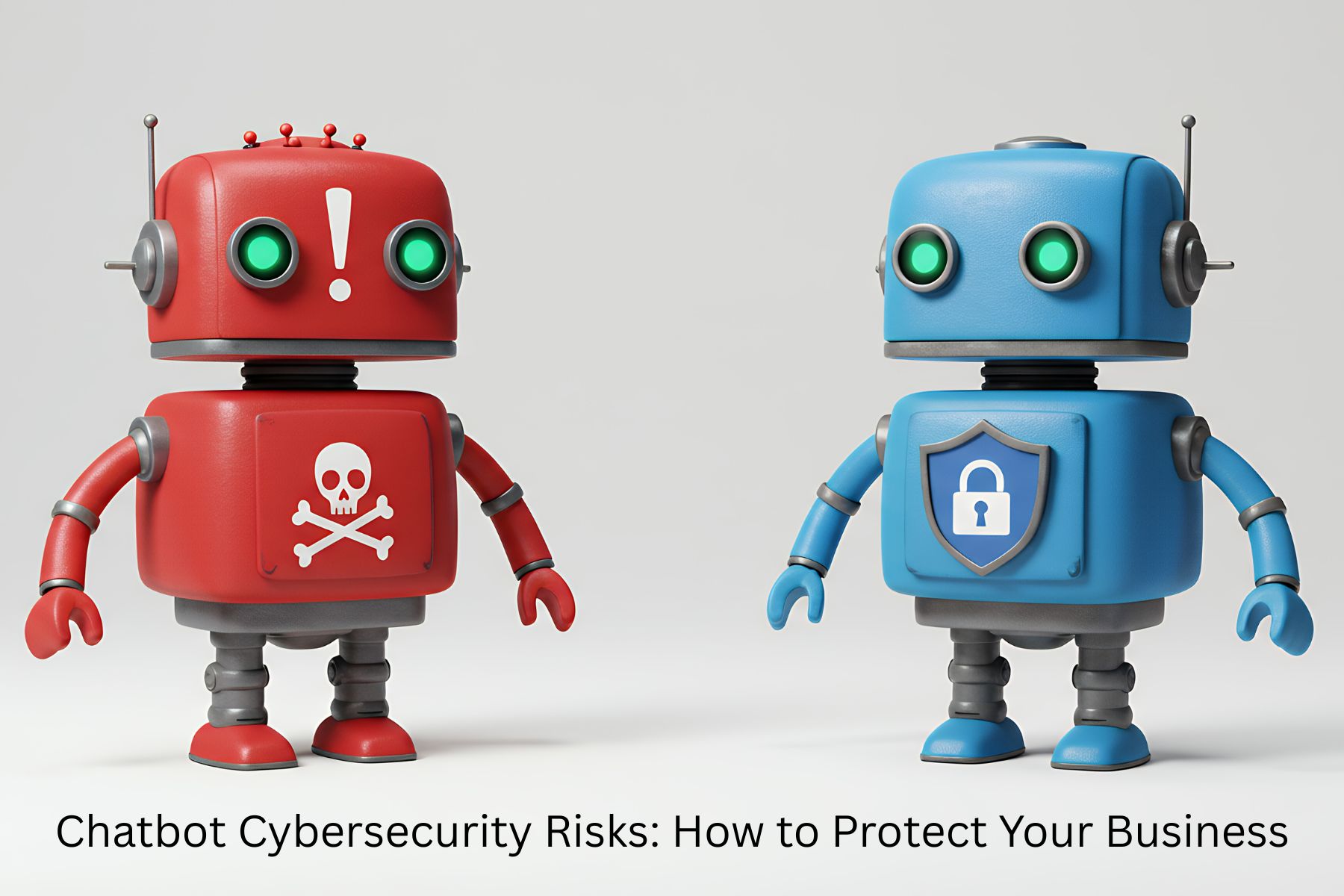Chatbots are everywhere these days—from handling customer questions on your website to helping you schedule appointments and even assisting with basic troubleshooting. And let’s be honest, they’re pretty convenient. They never sleep, never call in sick, and they don’t need coffee breaks. But while chatbots might seem like your dream employee, they also come with some risks that can be dangerous if you’re not paying attention.
If you’re a small to mid-sized business leader, especially in industries where every resource counts, it’s important to know how these digital helpers can turn into digital headaches.
What Is a Chatbot, Exactly?
A chatbot is a computer program designed to simulate conversation with humans. It can live on your website, inside messaging apps like Facebook Messenger or WhatsApp, or even in customer service platforms. Some are super basic—like answering FAQs—and others are powered by artificial intelligence (AI), which makes them capable of holding more realistic conversations. You may have interacted with one and didn’t even know it!
The Good Stuff (Before We Get Into the Scary Bits)
Chatbots aren’t all bad. When used wisely and securely, they can help you: cut down on support staff costs, speed up customer service, offer 24/7 availability, and gather customer data (with permission). But here’s the thing—just like any other technology, chatbots need to be handled carefully. Otherwise, they can open the door to serious cybersecurity issues and even damage your business’s reputation.
Chatbot Danger #1: Data Leaks
Chatbots often collect a lot of information from users—names, email addresses, account details, even payment info depending on how they’re set up. If your chatbot isn’t properly secured, that data can leak or be stolen by hackers.
And no, it’s not just big corporations that get targeted. In fact, small and mid-sized businesses are often seen as easier targets because they might not have strong security measures in place.
Imagine this: a customer shares their credit card info with your chatbot, thinking it’s secure. A hacker gets access and uses that info. Suddenly, you’ve got a data breach on your hands—and a big PR problem.
Chatbot Danger #2: Social Engineering Attacks
This one’s sneaky.
Cybercriminals can actually use chatbots as part of their scams. For example, they might create a fake chatbot that looks like it’s from your company. When your customers chat with it, thinking it’s you, they may be tricked into giving away sensitive info like passwords or account numbers.
That’s called a social engineering attack, and it’s alarmingly effective. It doesn’t just hurt your customers—it hurts your brand. Customers lose trust, and once that’s gone, it’s tough to get back.
Chatbot Danger #3: Weak Programming = Big Problems
Not all chatbots are created equal. If a chatbot is poorly built, it might say the wrong thing, misinterpret a customer’s message, or share confidential information it shouldn’t.
Even worse? Some chatbots can be tricked into giving out sensitive internal data if they’re not properly configured.
If you’re using an AI-powered bot, you need to be especially cautious. These bots learn from past interactions. If they “learn” from bad data or get fed incorrect information, their behavior can go off the rails.
Chatbot Danger #4: Compliance Nightmares
If you’re in a regulated industry—like healthcare, finance, or legal—there are rules about how you collect, store, and use data. A chatbot that isn’t compliant can put you in violation of privacy laws like HIPAA, GDPR, or CCPA. And yes, those violations can come with serious fines.
So, if your chatbot is collecting user data, you need to know exactly where that data is going, how it’s being stored, and who has access to it.
So, Should You Avoid Chatbots Completely?
Not necessarily! Chatbots can be a great tool, especially for businesses trying to do more with less. The key is to use them responsibly and make sure they’re part of a larger IT and cybersecurity strategy.
Here’s how to do that:
5 Quick Tips to Keep Your Chatbot Safe and Smart
-
Work with a trusted IT provider
Make sure your chatbot is set up and managed by someone who knows what they’re doing. Your IT partner should be able to verify that it’s secure, compliant, and updated regularly. -
Limit what the bot can access
Don’t give your chatbot the keys to the kingdom. It shouldn’t have access to your sensitive business data or systems unless absolutely necessary. -
Monitor interactions
Keep an eye on what your chatbot is saying and how users are interacting with it. You’ll catch issues faster and be able to update or retrain the bot if needed. -
Use encryption and secure connections
All data exchanged between your bot and users should be encrypted. That way, even if a hacker intercepts it, they can’t read it. -
Educate your team and customers
Let people know how to spot fake chatbots and scams. Encourage them to report suspicious interactions right away.
hatbots can be incredibly helpful—but like any technology, they need to be used wisely. If you’re using a chatbot, or thinking about adding one to your website or customer service tools, don’t go it alone.
As your Managed IT and Cybersecurity partner, we can help you set up chatbots securely, ensure they’re compliant with industry regulations, monitor them for suspicious activity, and protect your customer data. Want to make sure your chatbot is more of a superhero than a supervillain? Let’s talk.




